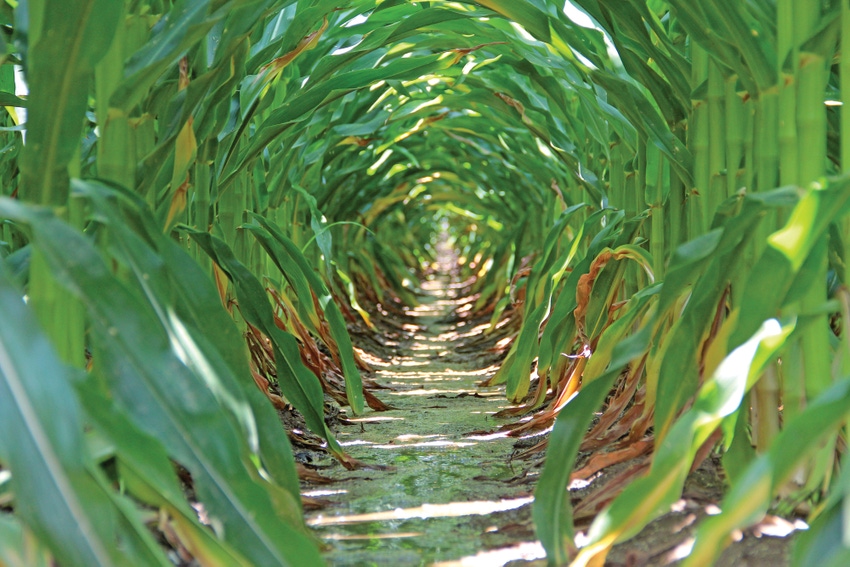July 3, 2012

This year’s Missouri corn needs rain and needs it soon.
The next couple weeks are critical for corn pollination, because silk growth and tassel pollen-shed must be in sync to create corn kernels. That coordination relies on water.
“Silks are at least 99 percent water, and they use it as the driving force to elongate from inside the husk until they emerge outside the husks, or about 10 inches,” said William Wiebold, professor of plant sciences in the University of Missouri College of Agriculture, Food and Natural Resources. “If the pollen sheds from the tassel and the silks aren’t there, no kernels are produced.”
Silk growth is only half of the critical pollination process. If the pollen does reach the silk, a tube created by the pollen grain must be able to grow down the silk to where the kernel will be, Wiebold said. There has to be enough water to keep the corn silk wet enough for the pollen tube to grow through its entire length to reach the ear.
This coordination process, colloquially called nick, is so important that if dry, hot conditions prevent it, you could see a 30-40 percent yield loss, Wiebold said.
A typical ear will have 12 to 14 rows, each with 35 to 40 potential kernels, he said. Lose just three kernels per row and that’s a substantial yield loss.
The lack of rain is having other negative effects on corn. Normally, corn tasseling occurs when plants are 7, maybe 8 feet tall, Wiebold said. Water pushes that growth.
“There are reports coming from throughout the state that corn is tasseling at 5 1/2 to 6 feet tall,” Wiebold said. “That’s a couple of feet shorter than normal, and it’s because there’s wasn’t enough water to increase plant cell size.��”
Corn leaf blades are coming in smaller for the same reason. All these stresses put this season’s corn yield in question.
“Probably the next two weeks will really determine what our yield will be,” Wiebold said. “Some places that had rain, like northwest Missouri, will see less yield loss. Places like St. Charles County and along the rivers, which have deeper soils with good water-holding capacity, should also experience less yield loss.”
Places that have seen little rain, have claypan soils or have compacted soils will experience large yield losses if rain doesn’t come soon. A heavy yield hit in the Corn Belt could send ripples through the futures market.
“The Chicago futures market will start calling around to the states to see what the weather is like,” Wiebold said. “It’s really important and it can drive the market price that farmers will receive.”
Less corn produced would mean higher prices, putting pressure on livestock producers who feed corn. At the end of this food chain, consumers could see sticker shock for meat and dairy products.
You May Also Like




